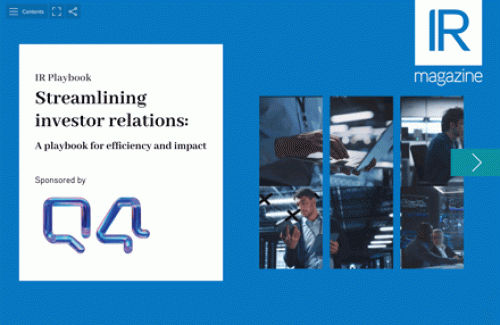Investor events, such as earnings calls, investor days and AGMs, have always been a useful source of intelligence about your investors. By tracking who shows up, how long they stay and what they ask, you can enhance your understanding of your buy-side audience.
But today’s online events offer a wealth of additional ways for audience members to interact with you, such as polls, chat rooms and content downloads, which can all be recorded and analyzed. Assuming that all privacy rules and regulations are observed, companies have a potential treasure trove of information at their fingertips.
As a starting point, it’s helpful for companies to understand what data points are available when they put on events. Potentially, there are a lot more than many people realize.
Erik Carlson, chief operating officer at Notified, lists the following areas:
• Attendee information – names, titles and contact details of participants
• Engagement metrics – duration of attendance, questions asked and polls participated in
• Behavioral data – click-through rates on shared links and downloads
• Feedback and sentiment analysis – responses to surveys and polls, or sentiment analysis from Q&A sessions
• Technical data – device types and geographic locations
• Investor questions, submitted pre-event or live.
Carlson says the amount and variety of proprietary data IR teams can gather is increasing. ‘This is driven by advancements in technology that offer more touchpoints and data-collection opportunities,’ he says. ‘Enhanced analytics tools and platforms also allow for deeper insights into stakeholder behavior and preferences.’
Breaking the silo
Peter Bonetta, director of professional services for IR at Q4, says traditional data-collection techniques followed a siloed approach. ‘Data lived in Excel spreadsheets,’ he explains. ‘It wasn’t really connected to broader workflows.’
As a result, the intel was hard to analyze and cross-reference, he adds. Time-pressed IR teams were unlikely to have the time to do the necessary data cleaning and comparison on their own.
Event providers today are aiming to solve these issues by standardizing the collection of data, making it easier to conduct event-over-event comparisons, and integrating stats from across different areas of the IR program.
‘The first step is offering a central source of truth that allows you, within a system, to compare and generate insights,’ says Bonetta. ‘If you have met with somebody before and then she pops up on your earnings call, and that link is made without you having to merge datasets or do a bunch of data analysis, those are pretty compelling insights.’
‘Integrating data from multiple sources, such as events, sites, press releases, CRM systems, social media, and so on, can provide a more comprehensive view of stakeholder engagement and preferences,’ notes Carlson. ‘It’s important to include this data in every phase of an IR program to attain the maximum benefit.’
Sylvie Harton, chief business strategy officer at Lumi, says AGMs offer unique feedback that can be useful for other IR activities. ‘Our legacy is coming from the AGM side of things, and data there is really key, because we need to be able to make our client compliant in terms of regulation with respect to how shareholders will vote on a certain resolution,’ she says.
The questions and voting that take place at the AGM can act as a ‘leading indicator’ of what to expect during other IR events later in the year, adds Harton. With the adoption of AI tools, companies should become even better at predicting future behavior, she says.
Getting started
So what should IR teams do if they want to start making more use of events data? Bonetta reminds issuers that to have a wide variety of data points available, you need to give people options to interact.
Companies can ‘set themselves up for success’ by capturing the right data, he says: ‘Consider leveraging different ways to engage your audience – for example, via surveys, Q&A and linked materials.’
Recent research by IR Magazine indicates that IR teams may not be making the most of these opportunities, at least at their investor days. A poll of IR professionals for our playbook How to modernize your investor day finds that only 25 percent include feedback surveys and only 6 percent use interactive polls.
Harton advises companies to take a comprehensive view of the intelligence they are collecting. ‘Don’t consider your AGM and IR event as two distinct points in time,’ she says. ‘Start thinking of this holistically, where behavior in one may impact behavior in the other… Your investors are going through a journey where there are various touch points – connect them.’
Finally, Carlson notes the importance of training and development to help make the most of the insights on offer. ‘Investing in training for IR teams on data analytics, AI tools and privacy regulations can enhance their capabilities and ensure they use data effectively and ethically,’ he concludes.










